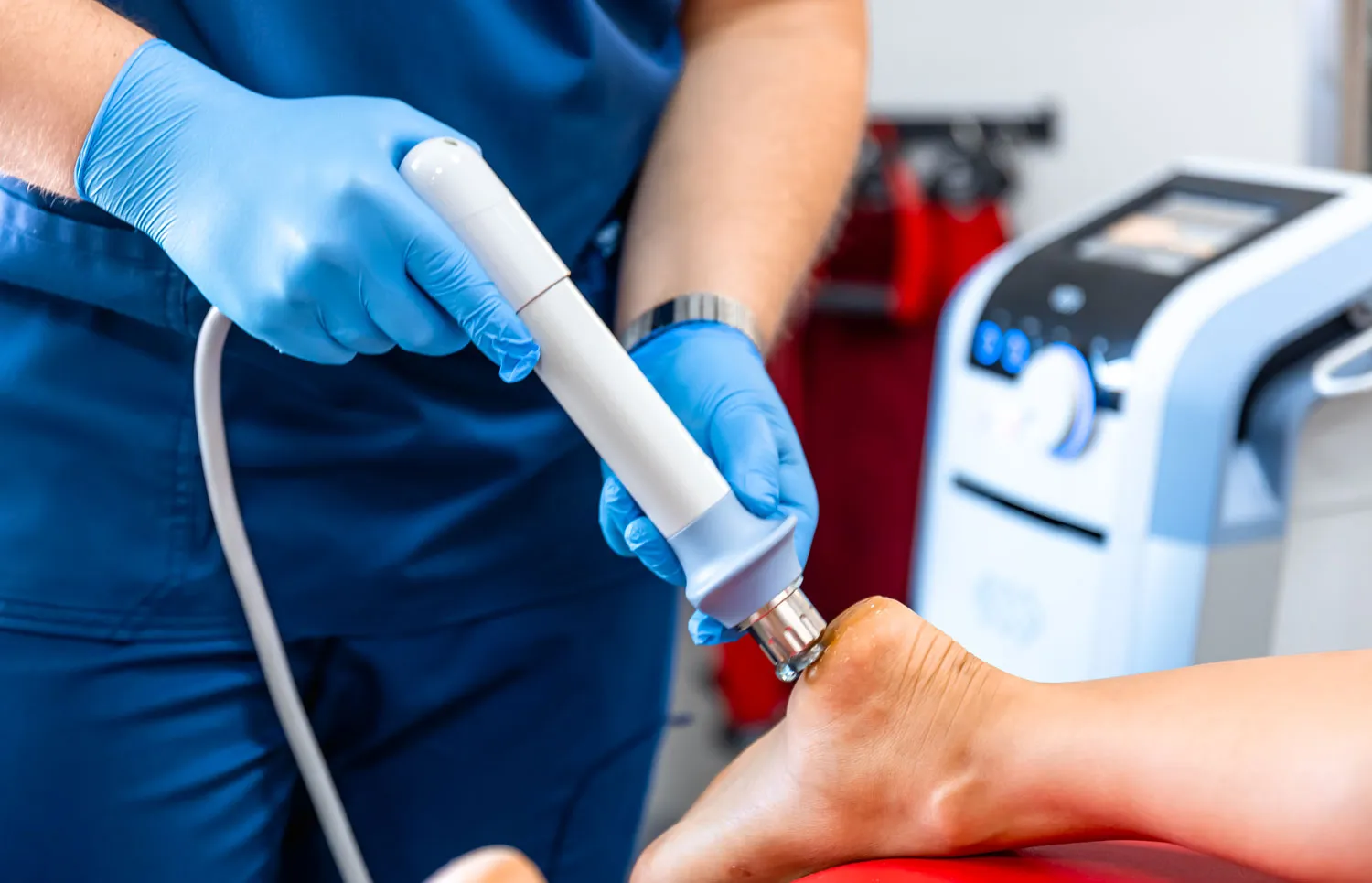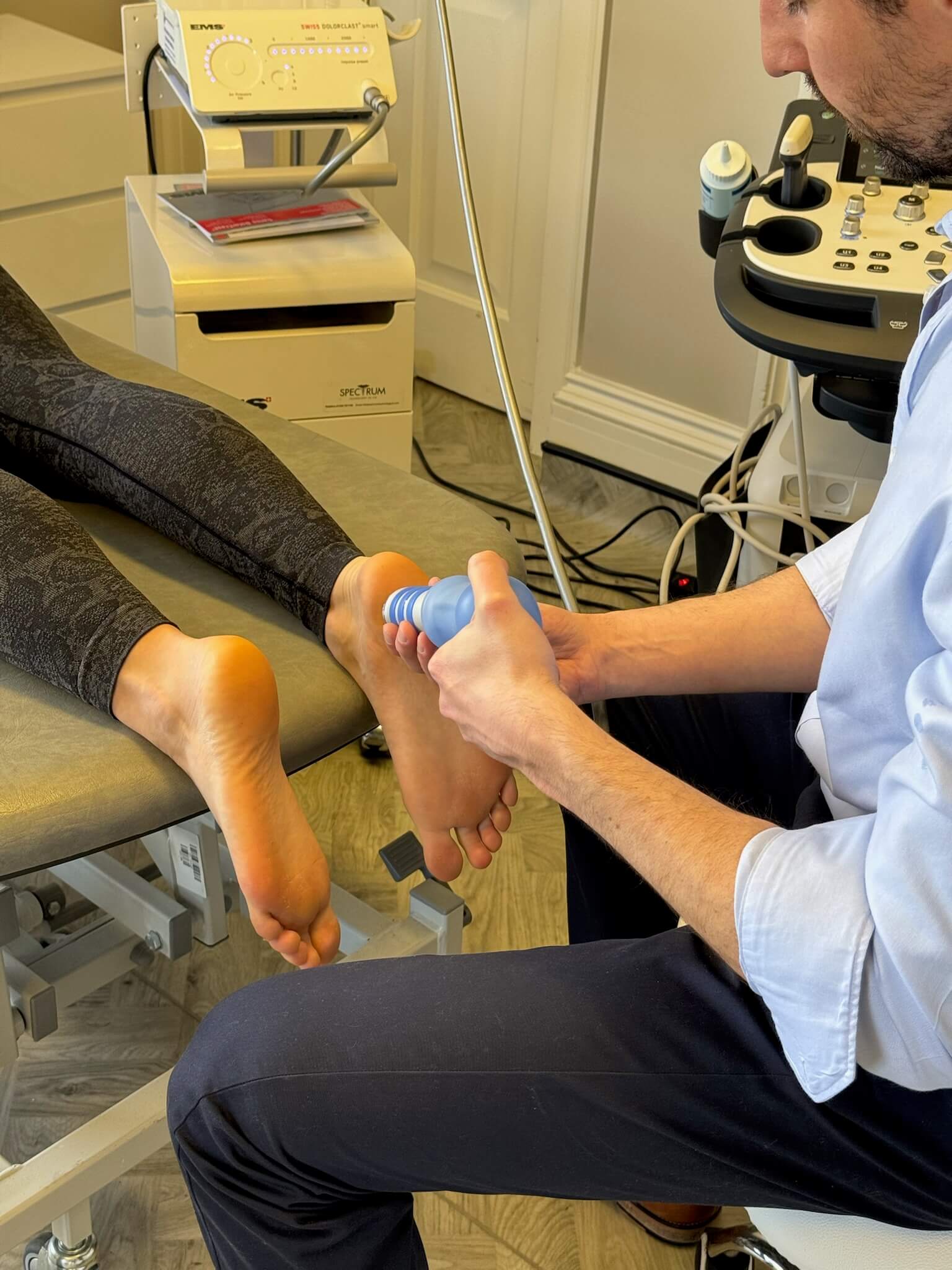Shockwave Therapy
What is Shockwave Therapy?
Shockwave therapy is used to treat chronic (long-term) soft tissue conditions such as plantar fasciitis that has failed to respond to previous conventional treatments. The technology is based on lithotripsy, which has been used since the 1980’s for the treatment of kidney stones. Shockwave therapy technology was adopted for use in soft tissue conditions in the 1990’s and has gradually grown in popularity since. A shockwave is a high-energy sound wave that is targeted to the injury using a hand-held applicator. Shockwaves are repeatedly applied to the injury area, which breaks down scar tissue and calcifications and initiates a healing cascade.

Radial Shockwave Therapy vs Focused ShockwaveTherapy
There are two main types of shockwave therapy, which are radial shockwaves and focused shockwaves. The differences are around how the shockwaves are generated and interact with biological tissue. In terms of effectiveness, there currently isn’t enough research to prove that one is more effective than the other. Radial shockwave therapy is more readily available so most providers offer this option and typically it involves 3 weekly treatment sessions, whereas focused shockwave therapy is less frequently used and typically involves 1 treatment session. Focused shockwave therapy can penetrate deeper structures than radial shockwave therapy, however this is not an added benefit when treating plantar fasciitis as the depth of radial shockwave therapy is perfectly adequate.

Does it Work?
In short, yes, shockwave therapy does work for the majority of patients with plantar fasciitis however, it doesn’t work for everyone. We have been using shockwave therapy for over 7 years and find that the success rate is approximately 70%. This success rate appears to be similar to clinical studies investigating shockwave therapy for treating plantar fasciitis. If you would like to learn more about the research check out our blog article here

Risks
Generally, shockwave therapy for plantar fasciitis is very safe. It is non-invasive and does not require a local anaesthetic. Rarely, there may be increased swelling, pain or bruising after treatment. Patients taking blood thinners medications are advised to stop their medication before receiving shockwave therapy due to the increased risk of bleeding. Contraindications include a surgical implant near the treatment area, patients with cancer and pregnancy.

Our Verdict
Shockwave therapy is a good treatment option for chronic cases (longer than 3 months) of plantar fasciitis. In our experience, the majority of patients wait until their heel pain has become chronic before seeking treatment. This often means that the degenerative changes within the plantar fascia are more advanced and are less likely to heal despite normal treatment. This is when shockwave therapy is a good treatment option, however, it should not be used as an isolated treatment as it does not address the underlying cause(s) of the condition. Shockwave therapy increases your body’s own ability to heal itself and should, therefore, be used as an adjunct treatment with other mechanical treatments such as stretching, orthotics, a night splint, and appropriate footwear.

Treatments
Other Treatments We Provide
Testimonials
Why People Love
The Heel Pain Expert